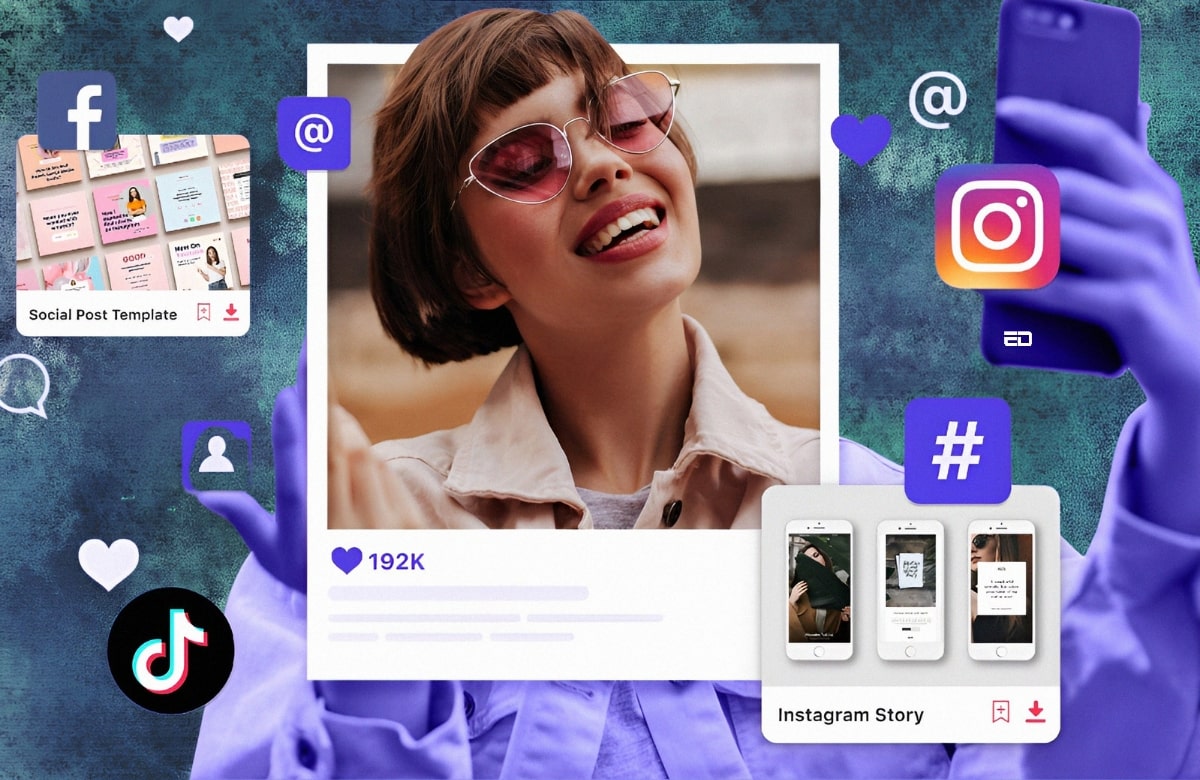According to a new report from Morning Consult, a global decision intelligence company delivering insights and custom market research on what people think in real-time, some 57% of Gen Zers said they would like to become an influencer if given the chance. This role is at an all time high, owing to the fame and money it offers.
According to EY’s Collective Artists Networks Big Bang Social Report, the influencer marketing industry in India is going to become more lucrative. It is expected to grow by 25% in 2024, hitting Rs. 2,344 crore versus Rs. 1,875 crore last year.
Big Bang Social is a creator super-app from Collective Artists Network that combines technology with talent management to provide creative and commercial value for brands and creators, by offering tools, resources, and opportunities for creators to monetize their assets and increase revenue streams.
What Is The Reason Behind This Sudden Surge?
Recently, the marketing tool has gained immense popularity. About 75% of brands are expected to consider influencer marketing as part of their marketing strategy.
This is the reason why this is the best time to be an influencer in India, as around 86% of influencers are expected to experience a growth of more than 10% in their income over the next 2 years.
A 2024 EY report titled ‘State of influencer marketing in India‘ claims that 73% of Indian influencers work for less than 10 hours a week, compared to up to 39 hours abroad.
Around 12% of influencers in India earn between Rs. 1 and 10 lakhs a month. This can be attributed to the huge amount of time smartphone users spend on social media.
These reports observe that around 50% of the screen time is spent on using social media platforms. Of the zillion online platforms out there, the youth prefers to consume the content posted by influencers on Instagram and YouTube.
“A lifestyle creator who charged 30 paisa per view for an IG reel in 2023 could charge 35-40 paisa in 2024. Creators who are able to increase their views and engagement by 30-40% year-on-year (YoY) are able to command a premium,” said Ritesh Ujjwal, co-founder at Kofluence, an AI-powered Ad-Tech Influencer Marketing marketplace.
Kofluence also says that the influencer marketing industry is growing at a 30% compound annual growth rate (CAGR), and the number of creators being able to monetise their content is estimated to grow by 15-20%. India has roughly 25-35 lakh content creators, of which only about 1,50,000 are able to monetise their content.
“There are two types of growth we are seeing. One is, the number of creators monetising their content, and the other is that micro to mega level creators are getting more deals. A typical YouTuber who makes content on a weekly basis, earlier did one or two sponsored posts in a month. Now, we see some brand integration in all the content they create. But this can be a double-edged sword, because the audience comes to see content, not ads,” the co-founder added.
Also Read: Delhi Man Warns People Of New Uber Fare Scam Using Fake Screenshot
Why Are Brands Opting For Influencer Marketing?
One of the reasons why brands are considering influencers as ambassadors is because of their huge following on social media.
EY’s report suggests that brands are using a mix of mega (those with plus 1 million followers) and nano influencers (those with 100-10,000 followers) equally.
Around 47% of brands preferred nano influencers over large influencers, because these influencers had an engagement of nearly 4% whereas, in the case of macro influencers, the engagement rate teetered between 1.5% to 2.5%.
Engagement rate is the percentage of the audience who engage with the content by liking or commenting on posts on social media. This choice of most of the brands proves advantageous for them because of the lower cost per reach.
“In the last couple of years, influencers have seen a significant growth in income, with many doubling or even tripling their earnings. This can be attributed to the increasing demand for influencer marketing, and the rise of new platforms offering monetisation opportunities,” said Kim Sharma, EVP of New Media, Dharma Cornerstone, a talent management and marketing agency.

Which Sectors Are Likely To Boost The Income Of Influencers?
The reports by EY also suggest that it is the lifestyle, fashion and beauty segments that are likely to drive the growth in influencer marketing. Automobiles, e-commerce and FMCG sectors are also expected to increase their spending on influencer marketing.
Approximately, 61% of the brands use influencers for spreading awareness and social media engagement around their brands. Out of this, 32% use influencer marketing to spread brand awareness whereas the remaining 29% of them use it to drive social media engagement.
Nearly 22% of brands use influencer marketing for lead generation whereas the other 17% use the tool for sales conversion.
“In India, people are spending 4.4 hours on social media. They go to Instagram 20 times a day. So, the audience is there. And brands follow the audience. A lot of established brands who get 15-20 percent of their business from online sales, are understanding the importance of influencer marketing. But spending depends on the category. An FMCG brand may spend 5 percent of their digital marketing budget on influencer marketing, whereas a beauty and personal care brand may spend 10-15 percent,” explained Ritesh Ujjwal.
Amiya Swarup, Partner, Marketing Advisory, EY India, commented on the findings of the report, saying, “In today’s rapidly changing Indian society, citizens face transformations in various aspects – be it societal norms, career paths, financial strategies, or cultural shifts.
Influencers are stepping in to provide guidance, reassurance, and advice, effectively assuming the role of contemporary heroes. Coupled with the projected growth in influencer marketing, it’s clear that influencers now define an unprecedented era of knowledge and impact, while also unlocking vast opportunities for brands and marketers.”
However, while more Indians are becoming influencers, it has yet to become a full-time job for many.
Image Credits: Google Images
Feature image designed by Saudamini Seth
Sources: Business Today, Moneycontrol, The Economic Times
Find the blogger: Unusha Ahmad
This post is tagged under: GenZ, influencers, social media, Instagram, Youtube, reels, shorts, creator, brand ambassador, brands, FMCG, content creators, makeup, art, fashion
Disclaimer: We do not hold any right, or copyright over any of the images used, these have been taken from Google. In case of credits or removal, the owner may kindly mail us.
Other Recommendations:
This Is How Hair Straightening And Kidney Failure Are Related





































